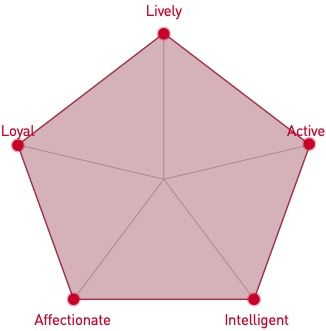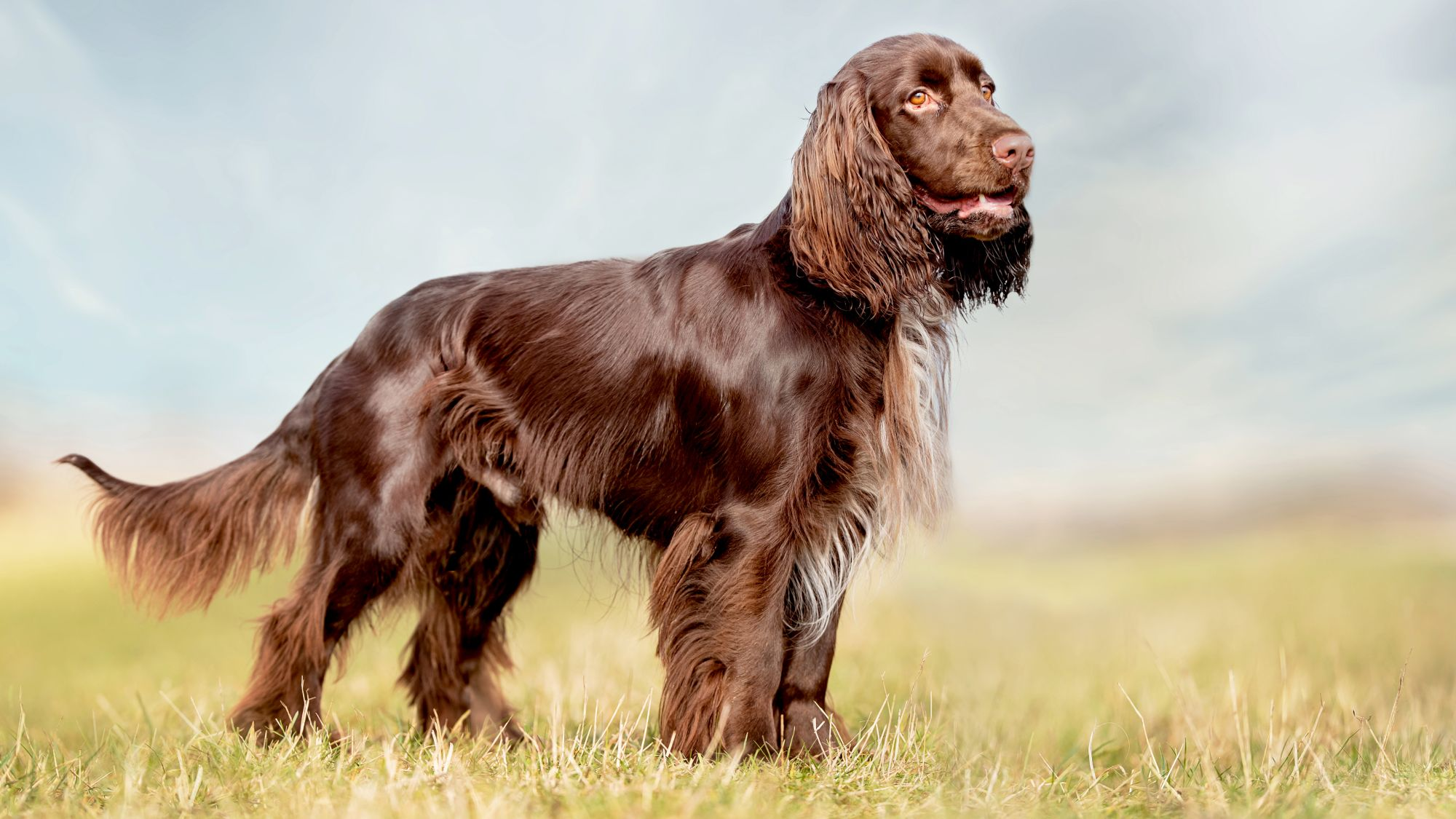
Let's talk Field Spaniels
As the name suggests, the Field Spaniel breed was originally developed for … the field. These hardy dogs were prized for their tracking, scenting and retrieving abilities, not to mention their stamina, while their eye-catching wavy coats also repel water. Thanks to their gentle and affectionate nature, Field Spaniels now make excellent companions for humans—sporty, outdoors-loving humans that is. Field Spaniels are not the kind of dog to content themselves with just a lazy stroll around the block. Consider yourself warned!Official name: Field Spaniel
Other names: None
Origins: United Kingdom

| Drooling tendencies: |
|
Warm weather? |  |
| Shedding level: |  |
Suited to apartment living? | |
| Energy level (high, low, medium) *: | Moderate | Family pet? * |
|
| Compatibility with other pets: |  |
Can stay alone? * |
|
* We advise against leaving pets alone for long stretches. Companionship can prevent emotional distress and destructive behaviour. Speak to your veterinarian for recommendations.
Every pet is different, even within a breed; this snapshot of this breed’s specifics should be taken as an indication.
For a happy, healthy and well-behaved pet, we recommend educating and socialising your pet as well as covering their basic welfare, social and behavioural needs.
Pets should never be left unsupervised with a child.
All domestic pets are sociable and prefer company. However, they can be taught to cope with solitude from an early age. Seek the advice of your veterinarian or trainer to help you do this.


| Baby age: | Birth to 2 months |
| Puppy age: | 2 to 12 months |
| Adult age: | 1 to 7 years |
| Mature age: | 7 to 10 years |
| Senior age: | From 10 years |

1/7
Get to know the Field Spaniel
All you need to know about the breed
Gorgeous canine athletes in glossy shades of chestnut and tan, with eye-catchingly outsize ears, Field Spaniels are in their element in the great outdoors. Tracking, chasing, swimming all come naturally to this active breed. That’s not to say they don’t make good pets—on the contrary, Field Spaniels are also loyal, affectionate and playful companions.
When it comes to exercise, the breed’s name should be a clue—these dogs are most definitely not couch potatoes and need their exercise, whether that means off-the-lead runs, games of fetch or regular long walks on the lead.
Field Spaniels are definitely not the best choice for apartment dwellers. However, aside from their need to burn off some energy (did we mention they need a lot of exercise?!), Field Spaniels are not a high-maintenance breed. They do shed, it’s true—though brushing is a good excuse for cuddles.

2/7
2 facts about Field Spaniels
1. Size categories
Field Spaniels are closely related to other spaniel breeds and in the early days of the breed, until 1901, weight was used to categorise the dogs. A puppy growing beyond 25lbs (11kg) was defined as a Field Spaniel, and one staying under that limit a Cocker Spaniel.
2. Brush with extinction
In the early days of the breed the Field Spaniel was popular, but a series of cross-breedings resulted in a large-headed dog too long for their height and with too much in the way of coat. While that iteration of the Field Spaniel breed was undoubtedly still adorable, it was not fit for purpose. Thankfully Mortimer Smith, a Field Spaniel enthusiast, set the stock back on the right course, saving the breed.
History of the breed
The Field Spaniel breed is thought to be descended from Cocker Spaniels, Sussex Spaniels and English Water Spaniels. Confusingly, back in the day in the United Kingdom where Field Spaniels originated in the 1800s, all sporting spaniels were in fact known as Field Spaniels. It was only late on in the 19th century that the Field Spaniel was recognised as a separate breed, larger than its Cocker cousin but sharing the same liveliness and affectionate nature. And, of course, those wonderful floppy ears.
It was around the same time that the Field Spaniel breed started to become known in the United States, where it first received recognition from the American Kennel Club in 1894.

4/7
From head to tail
Physical characteristics of Field Spaniels
1. Coat
Glossy, wavy weatherproof coat in shades of tan, liver or black.
2. Ears
Long, low-set well-feathered ears.
3. Tail
Sturdy, muscular build, feathered tail carried low.

5/7
Things to look out for
From specific breed traits to a general health overview, here are some interesting facts about your Field Spaniel

6/7
Caring for your Field Spaniel
Grooming, training and exercise tips
If you thought Field Spaniels were starting to sound suspiciously perfect, they do have one (minor) fault: They shed quite a bit. Weekly brushing will help keep things under control and ensure their lovely coats stay shiny and clean. The fur around their head and feet may need an occasional trim too, while their nails should be clipped frequently. Make sure you also brush your dog’s teeth regularly (daily if possible) to keep them in good condition. Exercise can come in the form of long walks, off-the-lead runs (in a safely enclosed space) or even swims. The important thing is that there’s plenty of it. Training-wise, while you will need to adopt a patient and consistent approach, with plenty of treats (taken out of their daily rations of course!), the results should be rewarding: Field Spaniels are intelligent, eager to please and food-driven—when it comes to training, that’s a winning combination. They even take well to activities such as canine obedience competitions and field trials, should some of their competitive nature have rubbed off on their humans. Once trained, they get on well with children, even if, like any breed, they should not be left alone with them. They can be a little wary of strangers at first—early socialisation should help with this.7/7
All about Field Spaniels
Absolutely! These affectionate and good-natured dogs form close bonds with their humans, even if they can be a little wary with strangers. Once trained, they get on well with children, although like any other breed they should not be left unsupervised with them.
Yes—if your heart is set on a Field Spaniel it may take a while to track (pun intended) one down. But it will be worth it! If you buy from a breeder, make sure you do your research and find a responsible one.
Read more on this topic

How your dog's nutrition needs change with age

How to adopt a dog

Things to consider before getting a dog
Sources
1 - Veterinary Centers of America https://vcahospitals.com/
2 - Royal Canin Dog Encyclopaedia. Ed 2010 and 2020
3 - Banfield Pet Hospital https://www.banfield.com/
4 - Royal Canin BHN Product Book
5 - American Kennel Club https://www.akc.org/



